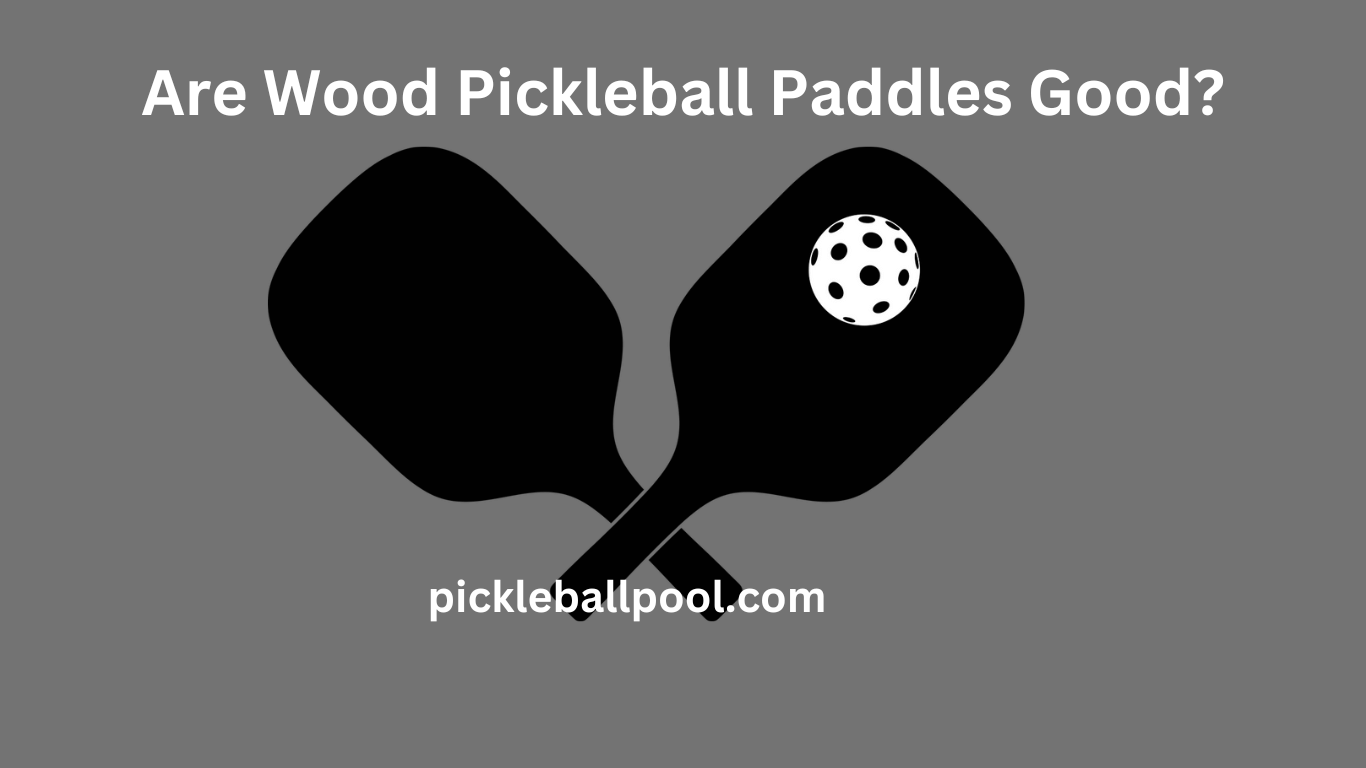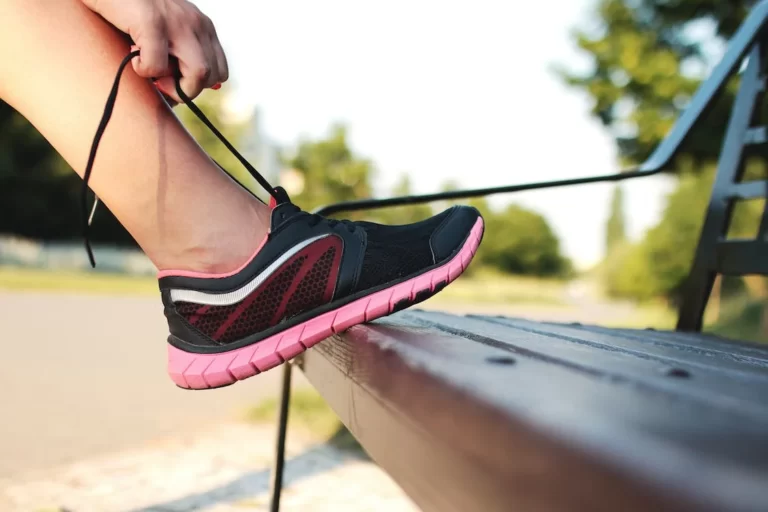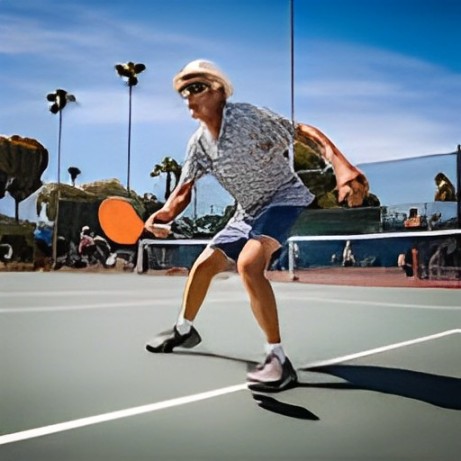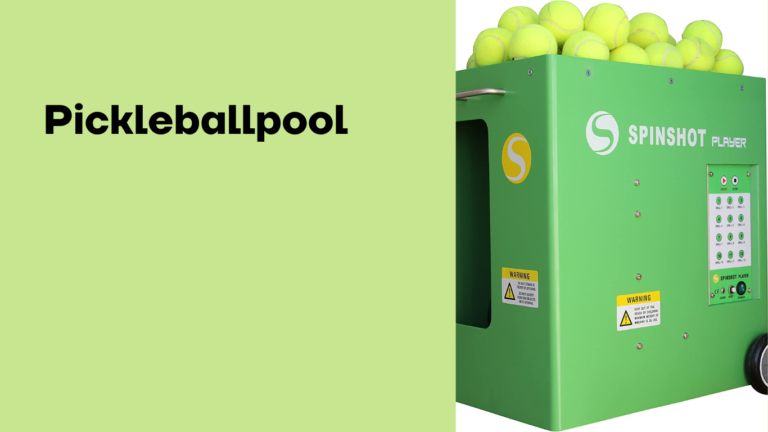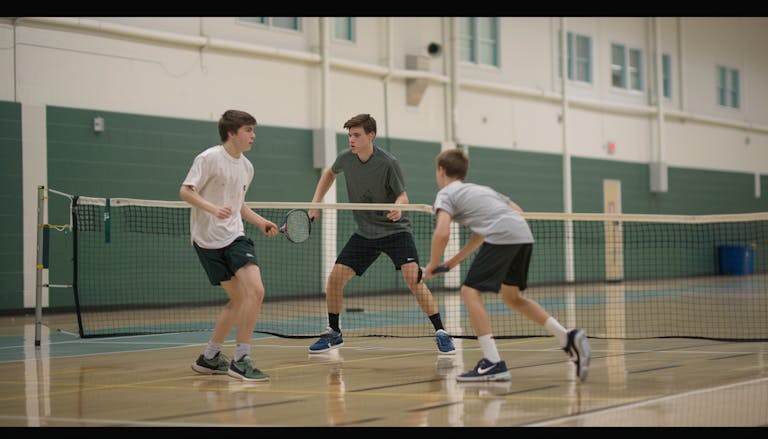Are Wood Pickleball Paddles Good? A Guide to Choosing Quality Wooden Paddle
Since the 1960s, pickleball paddle technology has come a long way. From the early days of crudely constructed wood paddles, the market now offers a variety of innovative materials, including graphite, carbon fiber, fiberglass, and even hybrid options. Each material possesses unique characteristics that can impact a player’s style of playing and the power or control they can generate.
While the modern game of pickleball has witnessed significant advancements in paddle materials, many players, both beginner and seasoned, continue to be drawn to the classic wood paddle. The wood paddle offers a sense of tradition and nostalgia for some players, harking back to the sport’s origins. Additionally, wood paddles can be a more affordable choice, making them accessible to a wider range of players.
Are Wood Pickleball Paddles Good?
However, wood paddles may not provide the same level of performance and innovation as their more technologically advanced counterparts. Beginners may find wood paddles to be less forgiving, while seasoned players may seek the enhanced power and control offered by newer paddle materials. Ultimately, the choice of paddle material comes down to personal preference and the player’s individual style of playing, and finding the right paddle is essential for improving your pickleball skills and performance.
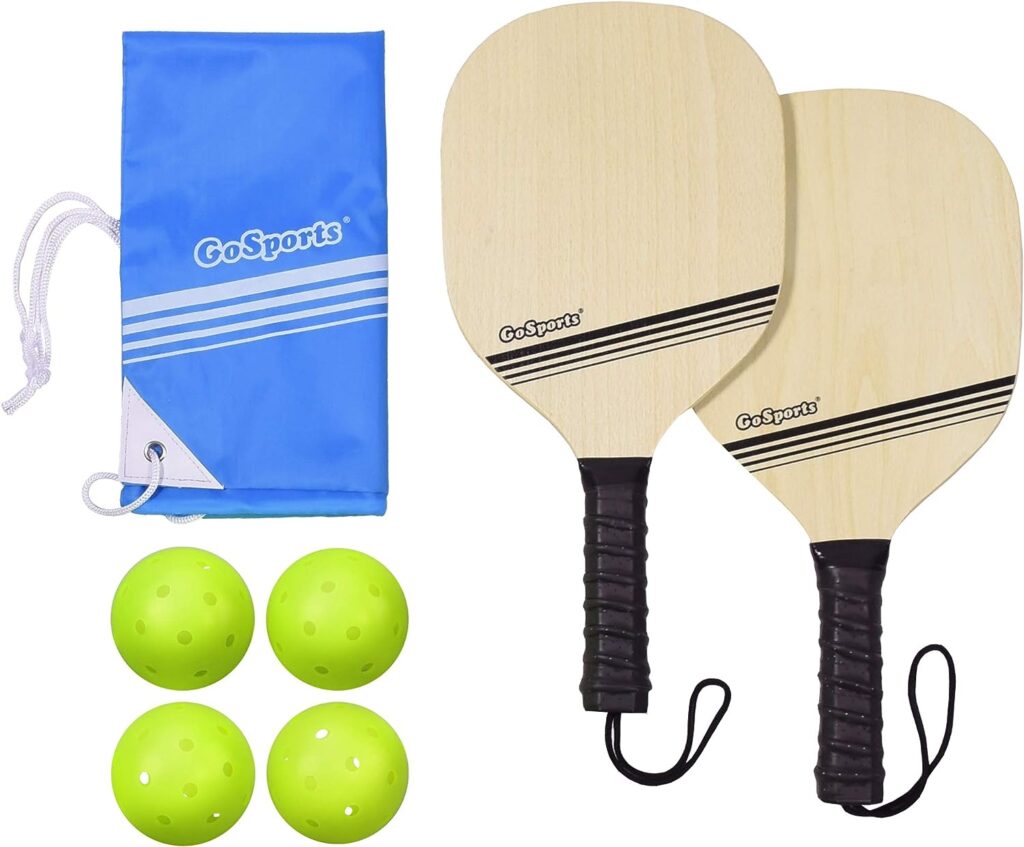
Pros Of Wood Pickleball Paddles
What are the benefits of using a wooden paddle over a composite rubber paddle in pickleball? Let’s explore.
Wood paddles offer several advantages that make them an appealing option for players. They provide a traditional feel and sound, adding a nostalgic touch and distinct playing experience. Affordability is another key benefit, as wood paddles are generally more budget-friendly compared to other materials, allowing recreational players to enjoy the game without a significant financial investment.
Additionally, wood paddles are known for their excellent control and touch. The natural properties of wood, such as its softness and flexibility, enable precise shot placement and subtle spin control, which can be particularly beneficial for players who prioritize finesse and strategy in their gameplay. Durability is another advantage, as wood paddles can withstand a fair amount of use and abuse, making them suitable for recreational play and beginners who may not be as gentle with their equipment.
Cons Of Wood Pickleball Paddles
While wooden paddles can offer a nostalgic appeal and a more affordable option, they also come with some notable drawbacks that players should consider:
- Limited Power: Compared to paddles made from composite or graphite materials, wooden paddles generally offer less power. Due to the inherent properties of wood, these paddles may not generate the same level of speed and force behind shots. This limitation can be a disadvantage when playing against opponents with more powerful gear, as it may be more challenging to match their shots.
- Weight and Balance Variations: When using wooden paddles, it is essential to note that weight and balance can vary significantly between different models. This lack of consistency can affect players’ ability to find a paddle that suits their preferred playing style. It may require some trial and error to find a wooden paddle with the right weight and balance for optimal gameplay.
- Heavier Weight: Wooden paddles are typically heavier compared to other materials. This can affect the player’s maneuverability and swing speed, making it somewhat more challenging to generate power and execute quick shots. However, some players appreciate the added weight as it can provide more stability and control in certain situations.
The choice between wooden and other paddle materials ultimately comes down to personal preference and the player’s individual playing style. While wooden paddles have their charm, understanding their potential cons can help players make an informed decision that aligns with their needs and goals on the pickleball court.
You may Like: 9 Best Pickleball Paddles Under $100 for Beginners to Pros
How to Choose the Right Material for Your Pickleball Paddle
When selecting the perfect pickleball paddle, the material is a crucial factor to consider. Your playing style, skill level, budget, weight preference, and durability needs should all inform this decision.
For power-focused players, a Nomex core paired with a fiberglass face can provide the desired performance. However, be mindful that too much power can compromise control, so finding the right balance is key. Beginners may fare better with a polymer core and carbon fiber or graphite face, which offer more control and finesse.
On the other hand, advanced players seeking lightweight quality may opt for an aluminum core with carbon fiber or graphite face materials. These combinations deliver the stiffness and responsiveness needed for precise shots. Experienced players who don’t mind a heavier paddle might prefer a Nomex or polymer core for a blend of power and control.
Ultimately, finding the right pickleball paddle material is a personal journey, balancing your individual preferences and playing needs. By considering these key factors, you can ensure your paddle aligns with your unique pickleball style and helps you excel on the court.
Common Materials Used for Pickleball Paddles
The material of your pickleball paddle can significantly impact your gameplay. Let’s explore the most common paddle materials and their unique characteristics:
| Material | Texture | Weight | Power | Durability | Best for | Players Level | Recommended by PBP |
| Graphite | Lightly Textured | Light | High | High | Control | All Levels | v |
| Composite | Textured | Medium | High | High | Power | Intermediate+ | v |
| Fiberglass | Textured | Medium | High | High | Control | Intermediate+ | v |
| Carbon Fiber | Textured | Light | High | High | Power | Advanced+ | v |
| Wood | Textured | Heavy | Low | High | Control | Beginner+ | v |
Graphite: A lightweight and soft material that excels at touch and control. Graphite paddles are durable and have a large sweet spot, but they tend to have a stiff feel and are often more expensive.
Carbon Fiber: A strong and durable material that’s great for power and spin. Carbon fiber paddles are considered a high-performance option.
Fiberglass: A less expensive material than graphite or carbon fiber that provides good pop on the ball. Fiberglass paddles are often used by hard hitters.
Wood: A low-cost option that’s popular with beginners, but wooden paddles lack the power and control of other materials.
Aluminum: An inexpensive and lightweight material suitable for beginners, junior players, and recreational use. However, aluminum paddles can be loud and may get dented over time.
Other less common paddle materials include aramid fiber and composite blends, each offering unique performance characteristics.
The material you choose for your pickleball paddle can significantly affect the power and control you’re able to generate during play. Understanding the strengths and weaknesses of each material can help you select the perfect paddle for your playing style and skill level.
Is Graphite or Fiberglass Better for Pickleball?
When it comes to pickleball paddles, the choice between graphite and fiberglass can significantly impact your gameplay. Both offer unique pros and cons that cater to different player preferences and styles.
Graphite Paddles: These are lightweight and maneuverable, providing excellent control over the ball. Graphite paddles have a larger sweet spot, allowing for more precision and handling when you hit the ball. However, they can be more expensive than other options and may lack the raw power of heavier paddles.
Fiberglass Paddles: Known for their durability, fiberglass paddles focus more on power and spin potential than control. They tend to be heavier than graphite, giving pickleball players more punch behind their shots. But this increased power can come at the cost of a smaller sweet spot, making them less forgiving and more difficult to maneuver.
When choosing between graphite and fiberglass, consider your goals and preferences as a pickleball player. If you value precision, handling, and swing speed, a graphite paddle may be the better fit. But if you prioritize power and spin, a fiberglass paddle could be the way to go.
For those seeking a balance of power and control, carbon fiber – a graphite variant – can be a compelling option, combining the rigidity of graphite with the adaptability of fiberglass.
Ultimately, the material of your pickleball paddle can significantly affect your game’s rhythm and strategy. Weighing the pros and cons of each option can help you find the best pickleball paddle for your unique playing style.
Why Don’t People Like Wood Paddles?
Wood paddles are often criticized for their weight, which can make them feel wild and unpredictable compared to composite paddles. Many players prefer the touch and control they get with composite paddles, finding wood paddles to be less forgiving.
Additionally, some players avoid wood paddles due to social pressure, as using them may draw criticism from other players. The quickness in defending spikes and body shots can also be more challenging with wood paddles, necessitating better court position and footwork to compensate.
Ultimately, the decision to use a wood paddle or a composite paddle comes down to personal preference and the playing performance you value most, such as spin, control, or power.
Are Wooden Pickleball Paddles Good Option for Beginners?
Wooden pickleball paddles are good option for beginners due to their balance of control, touch, and forgiving playability. The lighter-weight wood design is easy for novices to maneuver as they learn proper stroke techniques.
The smooth wood surface promotes good spin and predictability as the ball leaves the paddle. This consistency helps beginners better calibrate their shots as they develop directional control.
The touch-friendly play of wood also builds confidence for newcomers learning finesse shots like dinks and drops. The ball connects nicely to the paddle, allowing beginners to replicate delicate touch shots.
Finally, the value pricing of entry-level wood paddles keeps the investment low as beginners test their interest in the sport. So wood offers great accessibility and playability for those just starting.
Conclusion
In conclusion, the choice between wood, graphite, fiberglass, and other pickleball paddle materials ultimately comes down to personal preference and the player’s specific needs. While wood paddles offer a traditional feel and affordability, they may lack the power and control of more advanced composite materials. Graphite and fiberglass paddles provide enhanced performance characteristics, but at a higher cost.
Ultimately, the best pickleball paddle is the one that aligns with your playing style, skill level, and performance goals, whether that’s emphasizing power, control, or a balance of both. By understanding the pros and cons of each material, you can make an informed decision to elevate your pickleball game.
FAQs
Which material is better for pickleball paddles?
There is no single “better” material – it depends on the player’s needs and preferences. Common options include graphite, fiberglass, carbon fiber, and wood, each with their own pros and cons.
Who makes the best quality pickleball paddles?
Top brands for high-quality pickleball paddles include Selkirk, Paddletek, Onix, and Prolite. They use premium materials and manufacturing processes.
What is the difference between cheap and expensive pickleball paddles?
Cheap paddles may use lower-quality materials and construction, while expensive options offer features like lighter weight, larger sweet spots, and enhanced power/control.
How do you know if a pickleball paddle is good?
Look for a paddle made by a reputable brand, with positive reviews, and features that match your playing style and skill level. Try out paddles in person if possible.
Are expensive pickleball paddles really better?
More expensive doesn’t always mean better. Expensive paddles may offer superior performance, but a mid-range paddle from a good brand can also be an excellent choice for many players.

